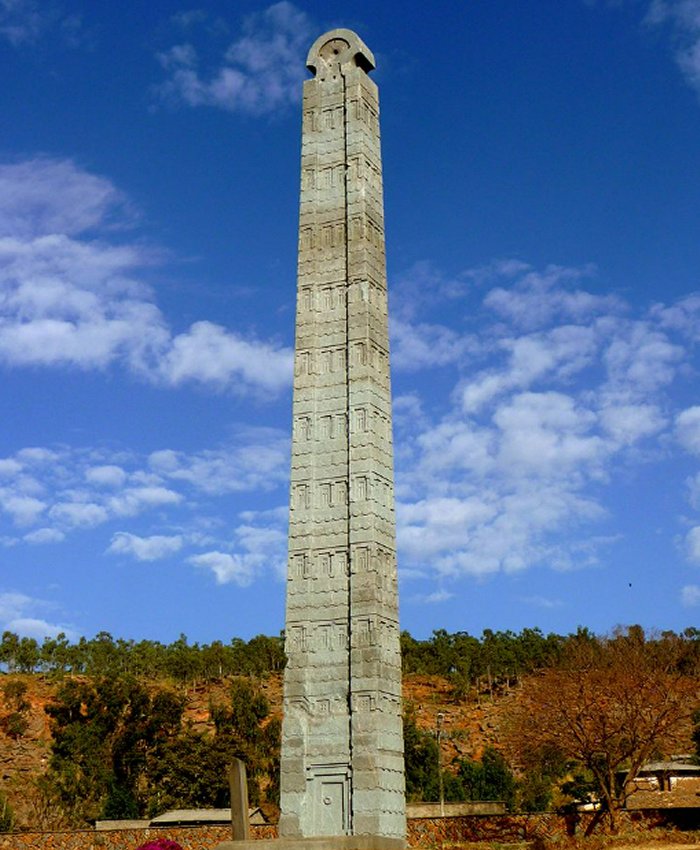Axum: Mysterious Megalithic Towering Obelisks In Ethiopia
A. Sutherland - AncientPages.com - The Kingdom of Aksum (Axum), also widely known as the Aksumite Empire, was an ancient civilization developed in one of the oldest continuously inhabited parts of the world – Ethiopia.
Many ancient references to this remarkable kingdom can be found in the famous works of Homer and Herodotus.
The Aksumite Empire, which existed from about 100 to 940 AD and had its height about 1st century AD, was a place of commerce and participated in trade contacts between the Roman Empire and ancient India.
The Aksumites controlled the entire region south of the Levant.
In her book 'Ethiopia - Culture Smart: The Essential Guide to Customs & Culture,' Sarah Howard writes:
"...Signs of the first civilization in the area appeared halfway through the first millennium BCE. The stone palaces and buildings at Yeha, twenty miles north of Axum, along with numerous other sites, reveal a rich culture very similar to that in Saba, southern Arabia, in their religion, language, and architecture.
By 300 BCE, the Kingdom of Axum was born—a rich trading nation with a foot on both sides of the Red Sea, routes to Egypt both inland and by the Red Sea, and trails to the south, where valuable commodities could be obtained.
Axum's obelisk- a false door. Image credit: jammingglobal.com
The Axumites spoke a Semitic language similar to the liturgical language of Ge'ez, which they originally wrote in a Sabaean script; they worshipped many gods with Sabaean names, also identified with Greek gods, and they minted coins.
They built impressive stone palaces and erected tall stone stelae (pillars, or vertical tablets)—one of them, at 520 tons and 108 feet (33 meters) high, is the largest stone object known to have been worked by men...."
The region the Aksumites inhabited was relatively remote. This location prevented them from conquest, in contrast to other civilizations in Mesopotamia and the Near East located at the crossroads of Asia, Europe, and Africa and surrounded by several competing and often dangerous states.
The Aksumites developed a high level of craftsmanship and were the only African culture credited for minting coins, mining precious metals, and producing unique artifacts and pottery.
The Rome Stele (also known as the Aksum Obelisk) in Aksum (Tigray Region, Ethiopia). Image credit: Ondrej Zvacek - CC BY 2.5
These ancient people also created their alphabet. However, one of their most prominent achievements is creating magnificent and gigantic obelisks honoring the kingdom's emperors. The central towering obelisk of Axum is believed to be 1,700 years old.
It is made of granite and weighs 160 tons. Its ornamentation consists of two false doors at the monument's base and a window-like decoration on the obelisk's all sides.
These gigantic structures - skillfully fastened beneath the ground – were meant to symbolize the prosperity of the great civilization that prospered for a millennium. They may have also been created for religious purposes before Christianity appeared in the region.
The erection of such enormous and perfectly cut monuments must have been difficult for their builders. Could the Aksumites be credited for this impressive job, as they are credited for mining metals, minting coins, and making pottery?
Could the obelisks, at least some of them, be much older and precede the existence of the Aksumite Empire?
Written by – A. Sutherland AncientPages.com Staff Writer
Updated on December 08, 2022
Copyright © AncientPages.com All rights reserved. This material may not be published, broadcast, rewritten or redistributed in whole or part without the express written permission of AncientPages.com
Expand for referencesReferences:
Howard S. 'Ethiopia - Culture Smart: The Essential Guide to Customs & Culture
More From Ancient Pages
-
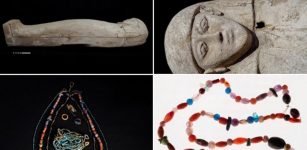 Beautiful Necklaces And Amulets Discovered In Ancient Egyptian Tomb
Archaeology | Apr 27, 2020
Beautiful Necklaces And Amulets Discovered In Ancient Egyptian Tomb
Archaeology | Apr 27, 2020 -
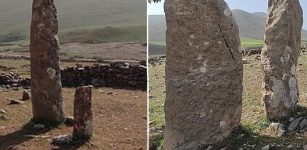 Unique Headstones Of Kela Mazin Cemetery In Kurdistan Are Probably 3,000 Years Old Or Much More
Archaeology | May 7, 2022
Unique Headstones Of Kela Mazin Cemetery In Kurdistan Are Probably 3,000 Years Old Or Much More
Archaeology | May 7, 2022 -
 Unexplained Phenomenon Around Yellowstone Puzzles Scientists
Featured Stories | Nov 12, 2018
Unexplained Phenomenon Around Yellowstone Puzzles Scientists
Featured Stories | Nov 12, 2018 -
 Treasure Hunters Encounter Something Unexplained In The Arizona Mountains
Featured Stories | Apr 7, 2022
Treasure Hunters Encounter Something Unexplained In The Arizona Mountains
Featured Stories | Apr 7, 2022 -
 Lost Ancient Texts Of The Star Catalogue Composed By The Greek Astronomer Hipparchus Found
News | Feb 21, 2023
Lost Ancient Texts Of The Star Catalogue Composed By The Greek Astronomer Hipparchus Found
News | Feb 21, 2023 -
 8th Century Sculpture Of Lord Vishnu Belonging To Pandya Dynasty – Unearthed
Archaeology | Sep 16, 2020
8th Century Sculpture Of Lord Vishnu Belonging To Pandya Dynasty – Unearthed
Archaeology | Sep 16, 2020 -
 Mysterious Railway Car Discovered Under An Old Fortress In Antwerp, Belgium
Archaeology | Apr 12, 2024
Mysterious Railway Car Discovered Under An Old Fortress In Antwerp, Belgium
Archaeology | Apr 12, 2024 -
 Unexplained Encounters With Invisible Barriers – Mysterious Rays And Energy Fields
Featured Stories | Jul 17, 2018
Unexplained Encounters With Invisible Barriers – Mysterious Rays And Energy Fields
Featured Stories | Jul 17, 2018 -
 A New Historical Inscription Of Sargon II From Karkemish Examined
Archaeology | Apr 22, 2019
A New Historical Inscription Of Sargon II From Karkemish Examined
Archaeology | Apr 22, 2019 -
 Frightening Ancient Underground World Discovered In Tibet – Evidence Of A Lost Advanced Civilization?
Featured Stories | Feb 17, 2024
Frightening Ancient Underground World Discovered In Tibet – Evidence Of A Lost Advanced Civilization?
Featured Stories | Feb 17, 2024 -
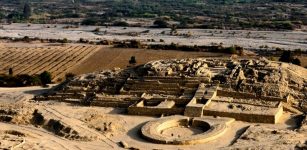 America’s Oldest City Caral Illegally Invaded And Archaeologist Threatened With Death
Archaeology | Jan 21, 2021
America’s Oldest City Caral Illegally Invaded And Archaeologist Threatened With Death
Archaeology | Jan 21, 2021 -
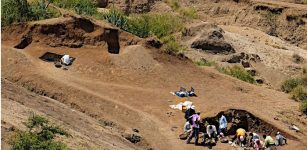 Investigation Of A 2.9-Million-Year-Old Site Reopens Case Of Who Made First Stone Tools
Archaeology | Feb 9, 2023
Investigation Of A 2.9-Million-Year-Old Site Reopens Case Of Who Made First Stone Tools
Archaeology | Feb 9, 2023 -
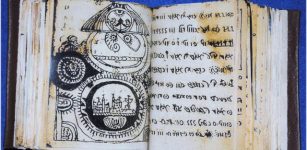 Rohonczi Codex Still Undeciphered – Is It The Most Secret Book Written In A Code?
Artifacts | May 30, 2014
Rohonczi Codex Still Undeciphered – Is It The Most Secret Book Written In A Code?
Artifacts | May 30, 2014 -
 Ancient Egyptian Blue Used To Create New Nanomaterial 100,000 Times Thinner Than A Human Hair
Ancient Technology | Mar 24, 2020
Ancient Egyptian Blue Used To Create New Nanomaterial 100,000 Times Thinner Than A Human Hair
Ancient Technology | Mar 24, 2020 -
 Long-Lost Ancient Tomb Of ‘China’s Shakespeare’ Finally Found
Archaeology | Aug 31, 2017
Long-Lost Ancient Tomb Of ‘China’s Shakespeare’ Finally Found
Archaeology | Aug 31, 2017 -
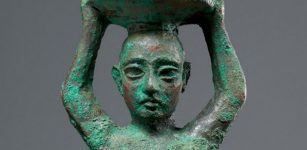 Divine Shulgi Of Ur: Influential, Long-Ruling King, Conqueror And Native Akkadian Speaker In Five Languages
Civilizations | Mar 22, 2019
Divine Shulgi Of Ur: Influential, Long-Ruling King, Conqueror And Native Akkadian Speaker In Five Languages
Civilizations | Mar 22, 2019 -
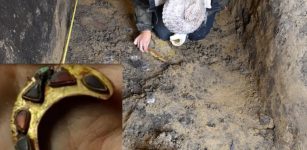 A Warrior’s Princely Tomb With Artifacts Unearthed In Romania
Archaeology | Dec 27, 2022
A Warrior’s Princely Tomb With Artifacts Unearthed In Romania
Archaeology | Dec 27, 2022 -
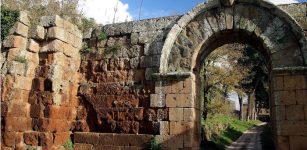 New Clues About The Fascinating Ancient Roman City Falerii Novi Revealed By Scientists
Archaeology | Sep 13, 2022
New Clues About The Fascinating Ancient Roman City Falerii Novi Revealed By Scientists
Archaeology | Sep 13, 2022 -
 Superhighways Traveled By The First Australians Reveal A 10,000-Year Journey Through The Continent – New Study
Archaeology | Feb 3, 2023
Superhighways Traveled By The First Australians Reveal A 10,000-Year Journey Through The Continent – New Study
Archaeology | Feb 3, 2023 -
 Beautiful Legends Of The Great Smoky Mountains: The Cherokee’s Little People Nunnehi And The Medicine Lake Ataga’hi
Myths & Legends | Jul 10, 2024
Beautiful Legends Of The Great Smoky Mountains: The Cherokee’s Little People Nunnehi And The Medicine Lake Ataga’hi
Myths & Legends | Jul 10, 2024



